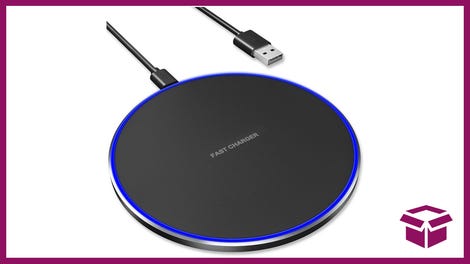NASA Breaks Record for Fastest Space-to-Ground Data Transfer
A small satellite the size of a tissue box has achieved a tremendous feat, beaming down data from space to Earth at a record-breaking rate, and doing so with laser communications.
NASA’s TeraByte InfraRed Delivery (TBIRD) system transmitted data from orbit to a ground station on Earth at a rate of 200 gigabits per second, beating its previous record of 100 gigabits per second, the space agency recently announced.
The data relay is the highest rate ever achieved by a space-to-ground optical communications technology. “Achieving 100 Gbps in June was groundbreaking, and now we’ve doubled that data rate—this capability will change the way we communicate in space,” Beth Keer, the mission manager for TBIRD, is quoted as saying in NASA’s statement.
TBIRD launched in May 2022 and was carried to orbit by NASA’s Pathfinder Technology Demonstrator 3 (PTD-3) satellite. The cubesat is designed to test laser communication technology as a way to send data to and from Earth using invisible beams that travel across space.
70% Off
Fast Wireless Charger
Charge it up
This thing can fast wireless charge a multitude of devices including iPhones, Samsung Galaxy phones, AirPods, and other devices too, and it’s really easy to use
During its latest test, TBIRD downlinked data to a NASA-run optical ground station, aiming its laser precisely toward the ground-based receiver, located in Table Mountain, California.
NASA currently relies on radio waves to transmit data to and from its orbiting spacecraft using the same type of technology used for car radios or cellphone towers. As the space agency looks to send humans to the Moon and beyond, NASA is contemplating more effective means of communications. Upgrading from radio frequency transmissions to laser communication would be akin to switching from dial-up to high-speed internet, according to NASA.
Laser communication systems pack data into the oscillations of light waves in lasers, encoding a message into an optical signal that is carried to a receiver through infrared beams that the human eye can’t see. This technology has the potential to increase data rates, meaning satellites would be able to send and receive more information in a single transmission compared to traditional radio waves.
“Just imagine the power of space science instruments when they can be designed to fully take advantage of the advancements in detector speeds and sensitivities,” Keer said. “Laser communications is the missing link that will enable the science discoveries of the future.”
For more spaceflight in your life, follow us on Twitter and bookmark Gizmodo’s dedicated Spaceflight page.
A small satellite the size of a tissue box has achieved a tremendous feat, beaming down data from space to Earth at a record-breaking rate, and doing so with laser communications.
NASA’s TeraByte InfraRed Delivery (TBIRD) system transmitted data from orbit to a ground station on Earth at a rate of 200 gigabits per second, beating its previous record of 100 gigabits per second, the space agency recently announced.
The data relay is the highest rate ever achieved by a space-to-ground optical communications technology. “Achieving 100 Gbps in June was groundbreaking, and now we’ve doubled that data rate—this capability will change the way we communicate in space,” Beth Keer, the mission manager for TBIRD, is quoted as saying in NASA’s statement.
TBIRD launched in May 2022 and was carried to orbit by NASA’s Pathfinder Technology Demonstrator 3 (PTD-3) satellite. The cubesat is designed to test laser communication technology as a way to send data to and from Earth using invisible beams that travel across space.

70% Off
Fast Wireless Charger
Charge it up
This thing can fast wireless charge a multitude of devices including iPhones, Samsung Galaxy phones, AirPods, and other devices too, and it’s really easy to use
During its latest test, TBIRD downlinked data to a NASA-run optical ground station, aiming its laser precisely toward the ground-based receiver, located in Table Mountain, California.
NASA currently relies on radio waves to transmit data to and from its orbiting spacecraft using the same type of technology used for car radios or cellphone towers. As the space agency looks to send humans to the Moon and beyond, NASA is contemplating more effective means of communications. Upgrading from radio frequency transmissions to laser communication would be akin to switching from dial-up to high-speed internet, according to NASA.
Laser communication systems pack data into the oscillations of light waves in lasers, encoding a message into an optical signal that is carried to a receiver through infrared beams that the human eye can’t see. This technology has the potential to increase data rates, meaning satellites would be able to send and receive more information in a single transmission compared to traditional radio waves.
“Just imagine the power of space science instruments when they can be designed to fully take advantage of the advancements in detector speeds and sensitivities,” Keer said. “Laser communications is the missing link that will enable the science discoveries of the future.”
For more spaceflight in your life, follow us on Twitter and bookmark Gizmodo’s dedicated Spaceflight page.
